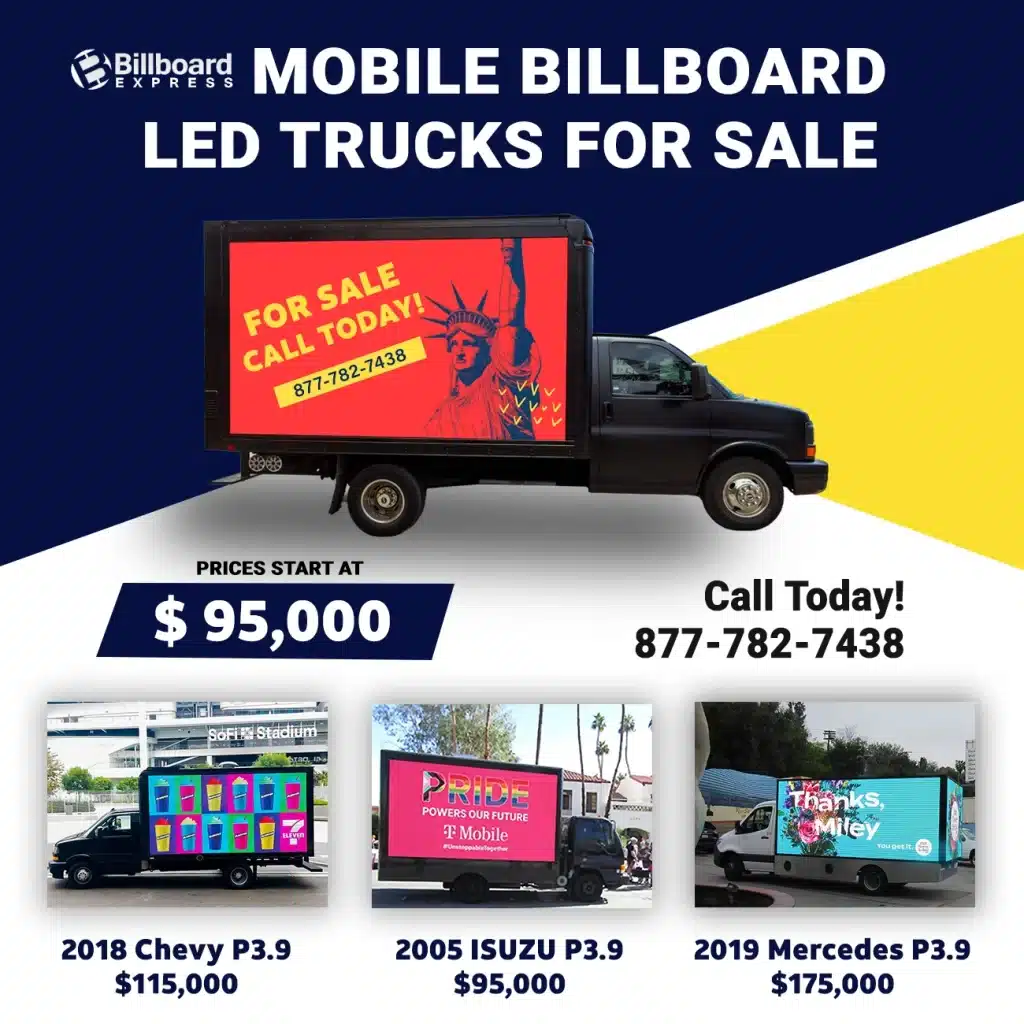
Outdoor advertising has always been one of the most powerful ways to capture attention, build brand recognition, and reach large audiences. For decades, traditional billboards have dominated highways, city centers, and busy intersections. But in recent years, mobile billboards—advertisements mounted on trucks, buses, or other vehicles—have gained popularity as a modern alternative.
Both forms of advertising have their strengths, but the big question is: Which works better—mobile billboards or traditional billboards? Let’s break it down.
What Are Traditional Billboards?
Traditional billboards are the classic large-scale advertisements fixed in a single location. They’re often placed on highways, near shopping centers, or in areas with heavy foot or vehicle traffic. These billboards come in different formats, including static posters, vinyl prints, and digital LED boards.
Their biggest strength lies in constant exposure—once installed, they can be viewed by thousands of people passing by every day.
What Are Mobile Billboards?
Mobile billboards, on the other hand, are ads displayed on moving vehicles such as trucks, vans, or buses. Instead of being tied to one location, they move through neighborhoods, business districts, or event venues, reaching different audiences throughout the day.
Some mobile billboards are even equipped with LED screens, allowing brands to display dynamic, eye-catching visuals that stand out in traffic.
Visibility and Reach
-
Traditional Billboards:
These work best in high-traffic locations where the same people pass by repeatedly. For example, a commuter who drives the same route to work every day will see the same billboard multiple times, which can strengthen brand recall. -
Mobile Billboards:
The advantage here is mobility. A mobile mobile billboard advertising can go where the target audience is. Whether it’s circling a sports stadium on game day or driving around busy shopping areas during weekends, these moving ads reach people at the right place and time.
Winner: Mobile billboards offer greater flexibility in reach, while traditional billboards excel at building consistent exposure in one area.
Cost-Effectiveness
-
Traditional Billboards:
The cost of renting a prime-location billboard can be high, and it’s usually based on traffic data. While they provide constant exposure, businesses are locked into paying for a fixed space, regardless of how many people actually notice the ad. -
Mobile Billboards:
These are often more affordable and efficient. Advertisers can choose specific routes, time slots, and areas to maximize impact. For example, if your target audience is office workers, you can run your campaign during rush hours in business districts.
Winner: Mobile billboards generally provide better return on investment for businesses with limited budgets.
Targeting Capabilities
-
Traditional Billboards:
Targeting is limited to location. For instance, a billboard on a highway might reach a wide audience, but not all viewers will be relevant to your brand. -
Mobile Billboards:
These allow for geo-targeted advertising. Businesses can take their message directly to their audience. A gym could advertise near residential areas, a restaurant could promote itself around lunchtime downtown, and a retail brand could showcase sales near malls.
Winner: Mobile billboards provide more precise targeting opportunities.
Audience Engagement and Recall
-
Traditional Billboards:
Because they are static, people often get used to seeing the same billboard and may eventually ignore it. Digital billboards are more engaging, but they still face the limitation of being tied to one spot. -
Mobile Billboards:
These stand out due to their movement and novelty. A large, vibrant truck driving past during traffic is hard to ignore. Studies show that mobile billboards often have higher recall rates because they disrupt the normal flow of scenery.
Winner: Mobile billboards lead in memorability and engagement.
Flexibility of Campaigns
-
Traditional Billboards:
Once a billboard is up, changing the message requires replacing the print or digital content, which can take time and add costs. -
Mobile Billboards:
Campaigns can be quickly adjusted. Vehicles can change routes, times, or even switch out ads faster, making them highly adaptable for short-term promotions, events, or seasonal offers.
Winner: Mobile billboards are far more flexible for dynamic campaigns.
When Traditional Billboards Still Work Best
Despite the advantages of mobile advertising, traditional billboards still have their place:
-
Long-term branding campaigns.
-
Highways or areas with consistent daily traffic.
-
Luxury or big-brand advertising where budget is not a major concern.
They remain an iconic part of outdoor advertising and are excellent for building sustained brand awareness.
The Future of Outdoor Advertising
While traditional billboards are here to stay, mobile billboards are quickly becoming the go-to choice for businesses looking for flexibility, affordability, and higher engagement. Their ability to move where the audience is—and even integrate with digital strategies using QR codes, hashtags, or live tracking—makes them highly effective in today’s fast-paced marketing world.
Final Verdict: Which Works Better?
If your business is focused on long-term brand recognition in a single high-traffic location, a traditional billboard may be the right choice. But if you’re looking for cost-effective, flexible, and highly engaging campaigns, mobile billboards are the winner.
For modern businesses competing in crowded markets, the future of outdoor advertising clearly leans toward mobile billboards—because they don’t just sit and wait to be seen, they take your message directly to the people who matter most.
